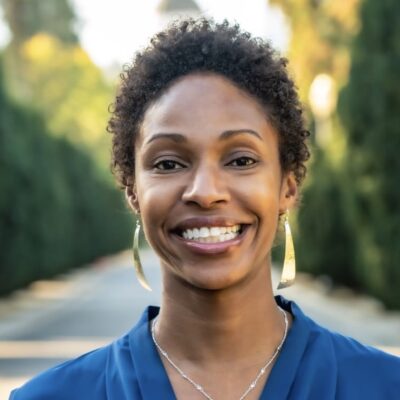In 2022, we launched the Cal Wellness Fellowship, which seeds and accelerates bold ideas and innovations by supporting individuals from diverse backgrounds who are working to advance racial and health equity, particularly within communities of color.
We are excited to announce our inaugural Cal Wellness Fellow Dr. Shani Buggs, assistant professor at UC Davis and its Violence Prevention Research Program (VPRP). A visionary in her field, Dr. Buggs studies causes, consequences, and prevention of firearm violence. She is a health and public policy scholar with expertise engaging federal, state, and local officials, agency leaders, and organizations on comprehensive and community-driven violence intervention and prevention efforts. In her research, she strives to consistently center the experiences of individuals most impacted by violence and interrogate structural determinants of health to advance equity, safety, and well-being.
Dr. Buggs is in the process of launching an organization that will bring together gun violence researchers of color to help "shape the narrative and shift our understanding of violence by centering those who are most impacted by the violence and who have the most to gain or lose by the policies and practices that are put in place." The organization will be led by "researchers who feel accountable to the communities that we're serving and we're talking about. Because, whether we are of lived experience or not, these are our family members, our friends, our neighbors, our communities."
Cal Wellness has funded gun violence prevention for decades. In the recent years, we have focused on community-based gun violence prevention efforts and on applied research. As part of that work, we’ve invested in building a pipeline of researchers of color focused on gun and community-level violence. We believe that in order to advance the field, we need to include more diverse perspectives in research and policy development.
We spoke with Dr. Buggs to learn about the state of community gun violence in our country, to find out what prevention strategies are working best, and what she thinks the future holds for this field. Our conversation has been edited and condensed for clarity.

